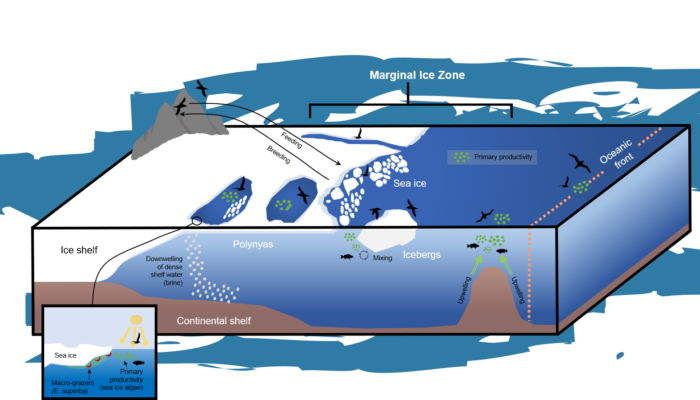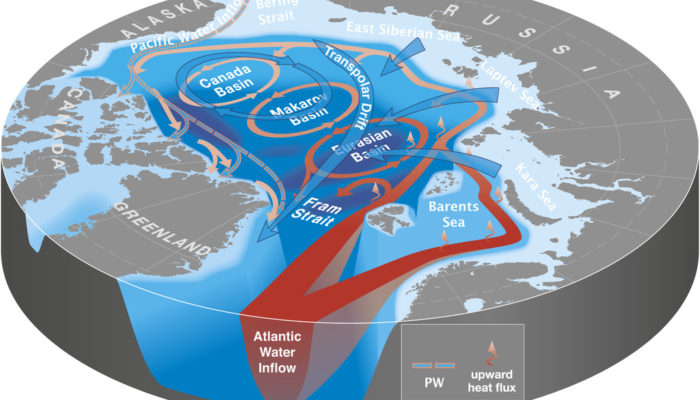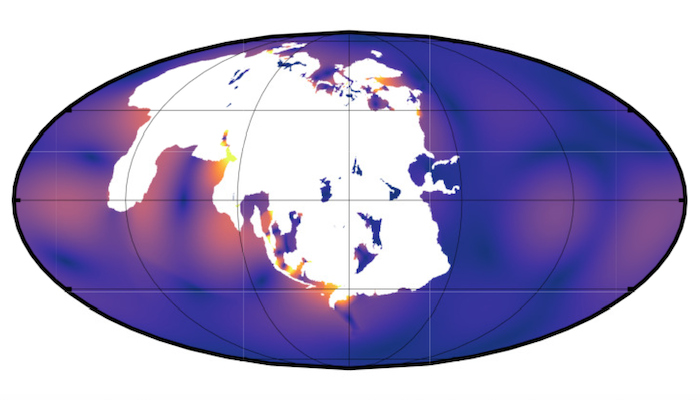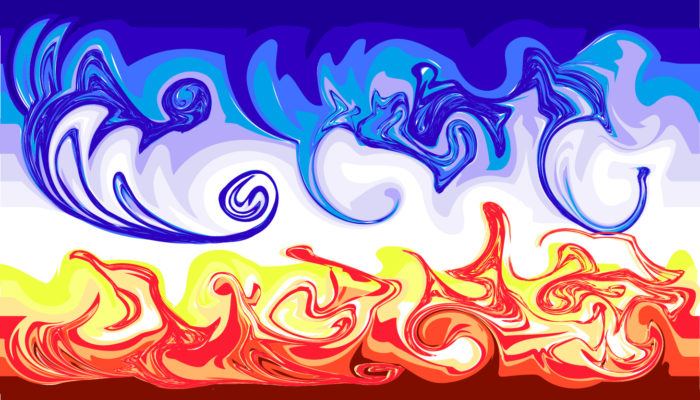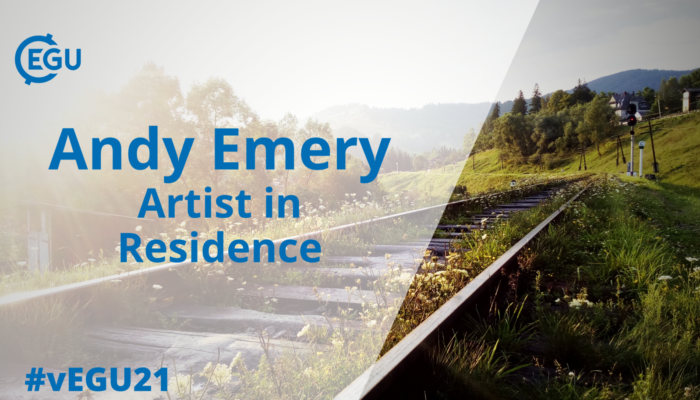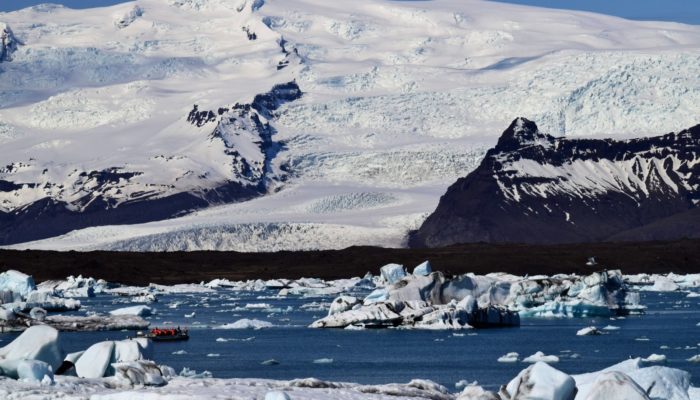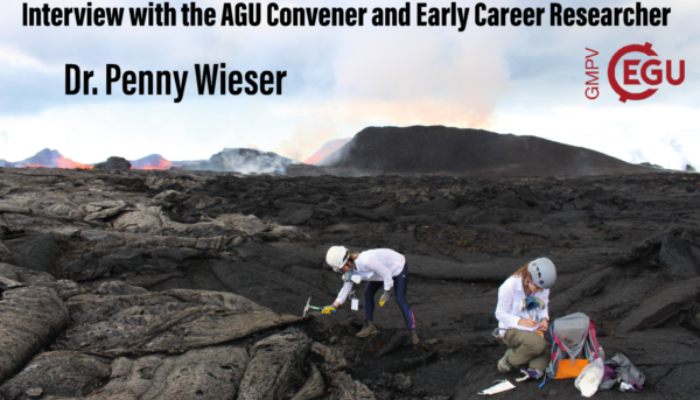The vast expanse of Antarctic sea-ice may appear inhospitable at first, but the region supports one of the most productive ecosystems on Earth. Amongst the organisms that call Antarctica home, certain seabird species have become so well adapted to the harsh conditions that they not only survive in the region, but flourish. Like all Antarctic organisms, seabirds are intricately linked to the contin ...[Read More]
If you didn't find what you was looking for try searching again.
Cryospheric Sciences
Image of the Week – Did you know that Arctic sea ice is melting from the bottom?
The current retreat of Arctic sea ice is a major sign of ongoing climate changes. And it could almost disappear during summer in a few decades from now, depending on the amount of greenhouse gases we will emit into the atmosphere. In this context, understanding what are the exact causes of this sea-ice loss is important. One of these causes is the amount of heat transported by the ocean (which dep ...[Read More]
Geodynamics
The Supercontinent Cycle
From orbital, to climatic, to tectonic evolution, many aspects of the Earth’s dynamics feature high degrees of cyclicity and episodicity, which can give us important insights into how the Earth’s works. The supercontinent cycle is an example capturing the Earth’s grandest scales and this week EGU geodynamics blog editor Tobias Rolf takes a closer look at it. Pangaea. This is a familiar term to eve ...[Read More]
Geochemistry, Mineralogy, Petrology & Volcanology
Happy Birthday Mama Etna!
18 May 1971. This date may not mean anything to you at the moment, but it represents a very special day for the evolution of Mount Etna, leaving a deep mark in the recent eruptive activity of the volcano. Exactly 50 years ago, Mount Etna saw the birth of what, only a short time later, was to become the most active crater of the last decades: “The South-East Crater”, the fourth child of ...[Read More]
Geodynamics
Whole solid-Earth numerical simulation: Towards an understanding of mantle-core interactive dynamics
Due to huge difference between the time scale of the mantle convection and the outer core convection, they are modelled separately. In this week’s News and Views, Masaki Yoshida from the Volcanoes and Earth’s Interior Research Center, Japan Agency for Marine-Earth Science and Technology (JAMSTEC), Japan, put forward the recent development on the modeling of the whole solid-Earth. The E ...[Read More]
GeoLog
Artist in Residence – Calmscape
This post is for everyone needing to relax during the conference, specifically written to accompany the Mindfulness Hour pop-up event on Thursday 29th April at 17:00 CEST. Calmscape Amidst the chaos of a conference, it can be hard to find peace, to stop and switch off. If you know where to look, even the hubbub. hustling, bustling corridors of the Austria Center hides a place of calm. Dart through ...[Read More]
Climate: Past, Present & Future
How humans are influencing climate change and its significance in defining a new geological epoch: the Anthropocene
The Anthropocene Working Group (AWG) is the body tasked to propose a formal definition for the Anthropocene as a geological time unit. Join us at the EGU2021 General Assembly on Wednesday 28th April at 14:15-15:00 CEST for a series of presentations on the Anthropocene in session SSP2.6. The Anthropocene concept Geologists cope with the enormity of 4.5 billion years of Earth history by divid ...[Read More]
Geochemistry, Mineralogy, Petrology & Volcanology
Interview with an ECR AGU2020 Convener – Dr. Penny Wieser
A few months ago, after AGU2020, I had the opportunity to interview Dr. Penny Wieser. Penny is an igneous petrologist and volcanologist with broad research interests and a substantial scientific record. Upon obtaining the undergraduate and masters degree in Earth Sciences at the University of Oxford, she pursued a PhD at the University of Cambridge, which was finished last year. She is now a post- ...[Read More]
Solar-Terrestrial Sciences
So… Who Cares about Switchbacks?
Explaining the Mysterious Plethora of Short Magnetic Field Reversals Observed by Parker Solar Probe and their Relation to the Origin of Solar Wind. In Switchbacks Explained: Super-Parker Fields – the Other Side of the Sub-Parker Spiral, N. A. Schwadron and D. J. McComas provide a simple geometric explanation for the source of “switchbacks” and associated large and one-sided transverse flows in the ...[Read More]
GeoLog
vEGU21: What makes a good CV?
This year for vEGU21 we couldn’t have our normal CV board for our attendee’s to share their skills and talents, so instead we added the ‘Ask me for my CV’ sticker that you can put in your profile to let people know that your CV is available. But what about the actual CV itself? Seismology Division Early Career Scientist Michaela Wenner has collected some of the best advice ...[Read More]

